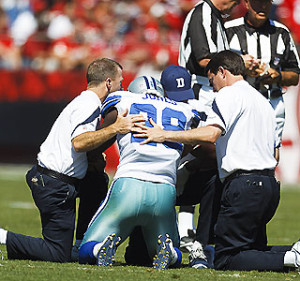A herniated disc can cause a lot of pain and usually debilitating in which the interior part of the vertebral column bulges via a small opening in the disc and presses on the spinal nerves. The spine is comprised of several stacked bones called as vertebrae that are separated and cushioned by the soft vertebral discs.
Take note that these discs can deteriorate as part of the aging process or injured with incorrect lifting or excessive body weight. The symptoms usually include weakness, pain and numbness in the lower or upper back, legs, arms, neck or buttocks. The recovery period will take some time but various treatment options are readily available to help ease the pain, hasten the healing process and prevent further injury from occurring.
Medications
The treatment for a herniated disc involving medications is aimed at reducing the pain and inflammation with the help of over-the-counter or prescription medications. Acetaminophen or ibuprofen is commonly used to ease the mild pain linked with a herniated disc but narcotics can also be prescribed for severe pain.

Another treatment option for severe pain usually includes injections of cortisone-like medications into the spinal area around the herniated disc. In some cases, muscle relaxants are also prescribed for those with back spasms which are considered as one of the common symptoms due to nerve compression. If you want to learn more about the management of this condition, click here.
Exercise
Exercise is considered as a vital component of therapy for herniated disc especially for long-term. Strengthening of the lower back and core muscles can help relieve pressure on the spine and helps prevent the recurrence of back issues. Take note that strength training will not always involve going to the gym since other options such as Pilates and yoga can greatly improve strength along with flexibility.
Observing a healthy diet and aerobic physical activity such as jogging, walking, swimming or cycling are essential in treating herniated disc especially for those who are overweight or obese since the extra weight adds strain on the back. It is best for the individual to consult a doctor first to determine if it is safe to start an exercise routine.
Physical therapy
Physical therapy is required for individuals who has a herniated disc and divided into passive and active. The passive treatment is structured to relieve the pain and reduce the healing time with massage, hot and cold therapy and electrical nerve stimulation. As for the active therapy, it is started once the individual heals and has enough strength for the physical exercises. The objective of active therapy is to strengthen the core of the body through strength training as well as improve the flexibility, posture and joint movement.
Surgery
Surgery is considered as the last resort for a herniated disc once the previous treatment do not work or the herniated disc presses on a nerve, resulting to significant loss of function. The treatment option tend to vary depending on the size and location of the herniated disc but can also involve the removal of the protruding part only or total removal of the affected disc. In the latter cause, the removed disc can be replaced with an artificial implant or attached metal pieces that provide support and mobility along the spine.
